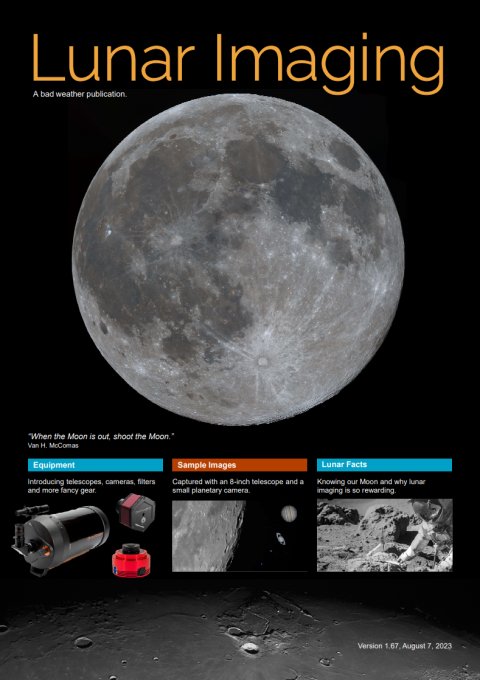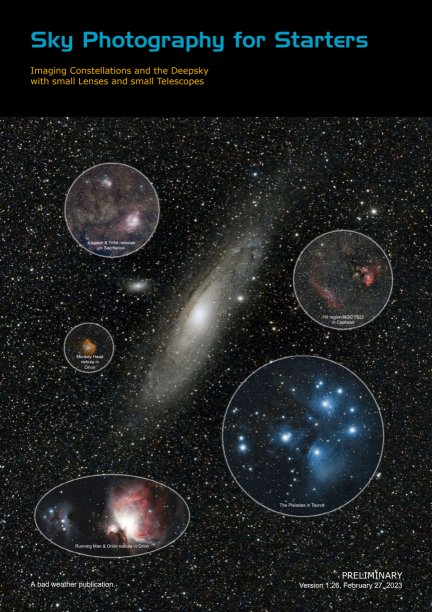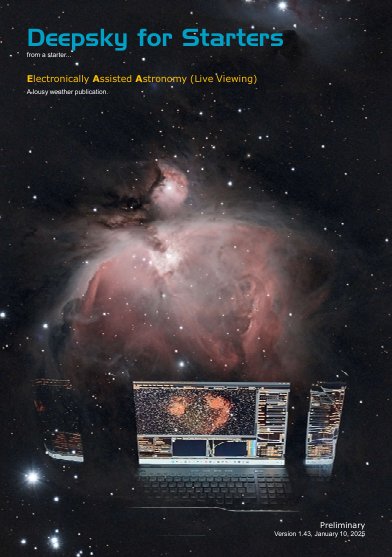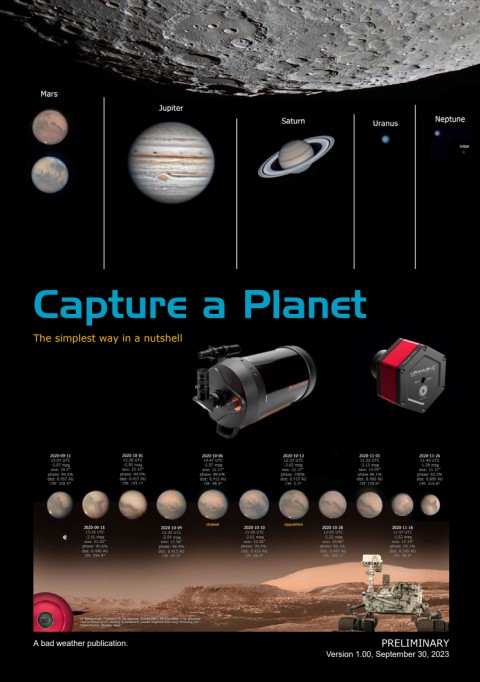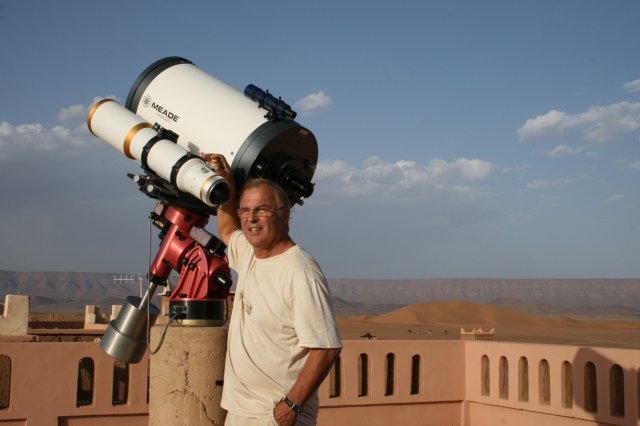Astronomical database with 3D simulations, visualizations, computations, review, articles, and more.
This website is not tailored to smartphones or other hand-held devices.

Sun & Moon Today
Current asteroid count is 1,351,400
Observable comet count is 1117
Current exoplanet count is 5616
Current longitude II of the GRS is 52°
Today Monitor
Planet Oppositions
Mars: January 16, 2025
Jupiter: December 7, 2024
Saturn: September 8, 2024
Uranus: November 17, 2024
Neptune: September 31, 2024
Greatest Elongation of Venus
Evening: January 10, 2025 at 47.2°E
Morning: June 1, 2025 at 45.9°W
Greatest Elongation of Mercury
Evening: December 4,2023 at 21.3°E
Morning: January 12, 2024 at 23.5°W
Evening: March 24, 2024 at 18.7°E
Morning: May 9, 2024 at 26.4°W
Evening: July 22, 2024 at 26.9°E
Morning: September 5, 2024 at 18.1°W
Evening: November 16, 2024 at 22.5°E
Morning: December 25, 2024 at 22.0°W
Comets to look out for:
Super Moons (full) 2024
Wednesday, September 18
Thursday, October 17
given for 00:00 UT
In Longitude (negative is western)
| Date | Size | Age | Angle | Phase |
|---|---|---|---|---|
| 07 Jan 2024 | 30.79' | 25.02 | -6.650° |  |
| 08 Jan 2024 | 31.26' | 26.02 | -6.770° |  |
| 03 Feb 2024 | 30.30' | 22.50 | -6.973° |  |
| 04 Feb 2024 | 30.72' | 23.50 | -7.583° |  |
| 05 Feb 2024 | 31.20' | 24.50 | -7.769° |  |
| 06 Feb 2024 | 31.72' | 25.50 | -7.466° |  |
| 07 Feb 2024 | 32.24' | 26.50 | -6.651° |  |
| 16 Feb 2024 | 31.66' | 6.04 | 6.779° |  |
| 17 Feb 2024 | 31.21' | 7.04 | 6.981° |  |
| 18 Feb 2024 | 30.80' | 8.04 | 6.862° |  |
| 02 Mar 2024 | 30.25' | 21.04 | -7.149° |  |
| 03 Mar 2024 | 30.63' | 22.04 | -7.776° |  |
| 04 Mar 2024 | 31.08' | 23.04 | -8.028° |  |
| 05 Mar 2024 | 31.57' | 24.04 | -7.844° |  |
| 06 Mar 2024 | 32.08' | 25.04 | -7.186° |  |
| 15 Mar 2024 | 31.85' | 4.63 | 6.947° |  |
| 16 Mar 2024 | 31.33' | 5.63 | 7.325° |  |
| 17 Mar 2024 | 30.85' | 6.63 | 7.301° |  |
| 18 Mar 2024 | 30.43' | 7.63 | 6.920° |  |
| 30 Mar 2024 | 30.34' | 19.63 | -6.691° |  |
| 31 Mar 2024 | 30.66' | 20.63 | -7.202° |  |
| 01 Apr 2024 | 31.03' | 21.63 | -7.405° |  |
| 02 Apr 2024 | 31.45' | 22.63 | -7.261° |  |
| 03 Apr 2024 | 31.89' | 23.63 | -6.743° |  |
| 13 Apr 2024 | 31.46' | 4.24 | 6.865° |  |
| 14 Apr 2024 | 30.95' | 5.24 | 6.983° |  |
| 15 Apr 2024 | 30.50' | 6.24 | 6.697° |  |
| 14 Aug 2024 | 30.51' | 9.53 | -6.644° |  |
| 15 Aug 2024 | 30.96' | 10.53 | -6.946° |  |
| 16 Aug 2024 | 31.45' | 11.53 | -6.807° |  |
| 27 Aug 2024 | 31.47' | 22.53 | 6.648° |  |
| 28 Aug 2024 | 31.09' | 23.53 | 6.822° |  |
| 29 Aug 2024 | 30.74' | 24.53 | 6.717° |  |
| 11 Sep 2024 | 30.44' | 7.92 | -7.081° |  |
| 12 Sep 2024 | 30.88' | 8.92 | -7.442° |  |
| 13 Sep 2024 | 31.38' | 9.92 | -7.388° |  |
| 14 Sep 2024 | 31.90' | 10.92 | -6.884° |  |
| 23 Sep 2024 | 32.03' | 19.92 | 6.983° |  |
| 24 Sep 2024 | 31.54' | 20.92 | 7.577° |  |
| 25 Sep 2024 | 31.07' | 21.92 | 7.769° |  |
| 26 Sep 2024 | 30.64' | 22.92 | 7.584° |  |
| 27 Sep 2024 | 30.28' | 23.92 | 7.067° |  |
| 09 Oct 2024 | 30.41' | 6.22 | -6.872° |  |
| 10 Oct 2024 | 30.80' | 7.22 | -7.260° |  |
| 11 Oct 2024 | 31.24' | 8.22 | -7.306° |  |
| 12 Oct 2024 | 31.73' | 9.22 | -6.971° |  |
| 21 Oct 2024 | 32.22' | 18.22 | 6.835° |  |
| 22 Oct 2024 | 31.69' | 19.22 | 7.618° |  |
| 23 Oct 2024 | 31.17' | 20.22 | 7.933° |  |
| 24 Oct 2024 | 30.69' | 21.22 | 7.796° |  |
| 25 Oct 2024 | 30.28' | 22.22 | 7.257° |  |
| 19 Nov 2024 | 31.78' | 17.47 | 6.845° |  |
| 20 Nov 2024 | 31.27' | 18.47 | 7.271° |  |
| 21 Nov 2024 | 30.79' | 19.47 | 7.223° |  |
| 22 Nov 2024 | 30.36' | 20.47 | 6.738° |  |
In Latitude (negative is southern)
| Date | Size | Age | Angle | Phase |
|---|---|---|---|---|
| 24 Jan 2024 | 30.14' | 12.50 | -6.549° |  |
| 25 Jan 2024 | 29.93' | 13.50 | -6.528° |  |
| 08 Feb 2024 | 32.71' | 27.50 | 6.591° |  |
| 20 Feb 2024 | 30.14' | 10.04 | -6.658° |  |
| 21 Feb 2024 | 29.89' | 11.04 | -6.663° |  |
| 05 Mar 2024 | 31.57' | 24.04 | 6.523° |  |
| 06 Mar 2024 | 32.08' | 25.04 | 6.747° |  |
| 07 Mar 2024 | 32.58' | 26.04 | 6.568° |  |
| 18 Mar 2024 | 30.43' | 7.63 | -6.754° |  |
| 19 Mar 2024 | 30.07' | 8.63 | -6.810° |  |
| 20 Mar 2024 | 29.80' | 9.63 | -6.556° |  |
| 02 Apr 2024 | 31.45' | 22.63 | 6.801° |  |
| 03 Apr 2024 | 31.89' | 23.63 | 6.741° |  |
| 14 Apr 2024 | 30.95' | 5.24 | -6.695° |  |
| 15 Apr 2024 | 30.50' | 6.24 | -6.846° |  |
| 16 Apr 2024 | 30.12' | 7.24 | -6.665° |  |
| 29 Apr 2024 | 31.18' | 20.24 | 6.717° |  |
| 30 Apr 2024 | 31.49' | 21.24 | 6.734° |  |
| 12 May 2024 | 30.97' | 3.86 | -6.734° |  |
| 13 May 2024 | 30.54' | 4.86 | -6.649° |  |
| 26 May 2024 | 31.26' | 17.86 | 6.556° |  |
| 27 May 2024 | 31.51' | 18.86 | 6.627° |  |
| 08 Jun 2024 | 31.21' | 1.47 | -6.565° |  |
| 09 Jun 2024 | 30.83' | 2.47 | -6.570° |  |
| 23 Jun 2024 | 31.72' | 16.47 | 6.548° |  |
| 06 Jul 2024 | 30.85' | 0.04 | -6.542° |  |
| 20 Jul 2024 | 31.77' | 14.04 | 6.576° |  |
| 01 Aug 2024 | 31.01' | 26.04 | -6.516° |  |
| 02 Aug 2024 | 30.73' | 27.04 | -6.622° |  |
| 16 Aug 2024 | 31.45' | 11.53 | 6.680° |  |
| 17 Aug 2024 | 31.94' | 12.53 | 6.611° |  |
| 28 Aug 2024 | 31.09' | 23.53 | -6.608° |  |
| 29 Aug 2024 | 30.74' | 24.53 | -6.758° |  |
| 30 Aug 2024 | 30.43' | 25.53 | -6.567° |  |
| 12 Sep 2024 | 30.88' | 8.92 | 6.748° |  |
| 13 Sep 2024 | 31.38' | 9.92 | 6.795° |  |
| 24 Sep 2024 | 31.54' | 20.92 | -6.608° |  |
| 25 Sep 2024 | 31.07' | 21.92 | -6.837° |  |
| 26 Sep 2024 | 30.64' | 22.92 | -6.706° |  |
| 09 Oct 2024 | 30.41' | 6.22 | 6.695° |  |
| 10 Oct 2024 | 30.80' | 7.22 | 6.831° |  |
| 11 Oct 2024 | 31.24' | 8.22 | 6.620° |  |
| 22 Oct 2024 | 31.69' | 19.22 | -6.763° |  |
| 23 Oct 2024 | 31.17' | 20.22 | -6.728° |  |
| 05 Nov 2024 | 30.24' | 3.47 | 6.535° |  |
| 06 Nov 2024 | 30.52' | 4.47 | 6.723° |  |
| 07 Nov 2024 | 30.84' | 5.47 | 6.580° |  |
| 18 Nov 2024 | 32.26' | 16.47 | -6.549° |  |
| 19 Nov 2024 | 31.78' | 17.47 | -6.638° |  |
| 03 Dec 2024 | 30.57' | 1.74 | 6.584° |  |
| 16 Dec 2024 | 32.04' | 14.74 | -6.545° |  |
| 30 Dec 2024 | 30.69' | 28.74 | 6.543° |  |
Source: NASA/GSFC
Lunar Calendar 2024
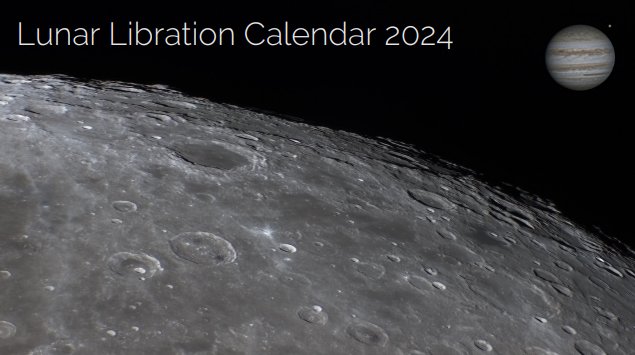 Lunar Libration Calendar2024 (PDF 11.2 MB)
Lunar Libration Calendar 2023 (PDF 3.3 MB)
Lunar Libration Calendar2024 (PDF 11.2 MB)
Lunar Libration Calendar 2023 (PDF 3.3 MB)
Latest STScI News Release
Hubble Celebrates 34th Anniversary with a Look at the Little Dumbbell NebulaApril 23, 2024

Taking up most of the image, is a multi-colored nebula appearing as two translucent orbs attached by a white band.
Source: Space Telescope Science Institute
Tonight's Sky
Warning: file_get_contents(https://hubblesite.org/resource-gallery/learning-resources/tonights-sky?api_key=Av1OPFg42g5LvUotC7fe9ttZfFK5i5IdDOHtO5wL): failed to open stream: HTTP request failed! HTTP/1.1 404 Not Found in /home3/requio/public_html/index.php on line 311
NASA Image of the Day
Hubble Spots a Magnificent Barred Galaxy
The magnificent central bar of NGC 2217 (also known as AM 0619-271) shines bright in the constellation of Canis Major (The Greater Dog), in this image taken by the NASA/ESA Hubble Space Telescope. Roughly 65 million light-years from Earth, this barred spiral galaxy is a similar size to our Milky Way at 100,000 light-years across.
Click to enlarge or show full screenFri, 26 Apr 2024 17:01 GMT
Source: www.nasa.gov
Asteroid Apophis
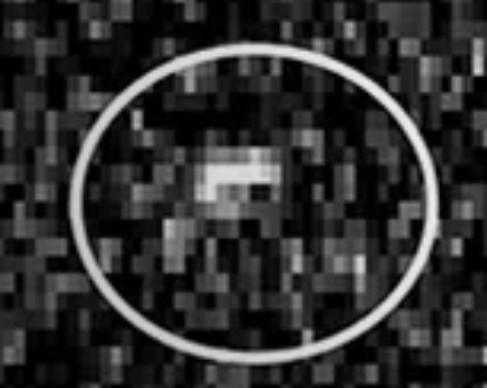
Image credit: NASA/JPL
2024-03-15 solar system
According to NASA, on April 13, 2029, Apophis will pass less than 20,000 miles (32,000 kilometers) from Earth's surface, closer than the distance of geosynchronous satellites. Although previously dubbed the Doomsday Asteroid, about 340 meters wide Apophis does not pose any danger of impact during close approach in 2029 as it will be visible with the unaided eye. Link to source 🔗
Moonquakes near Lunar South Pole
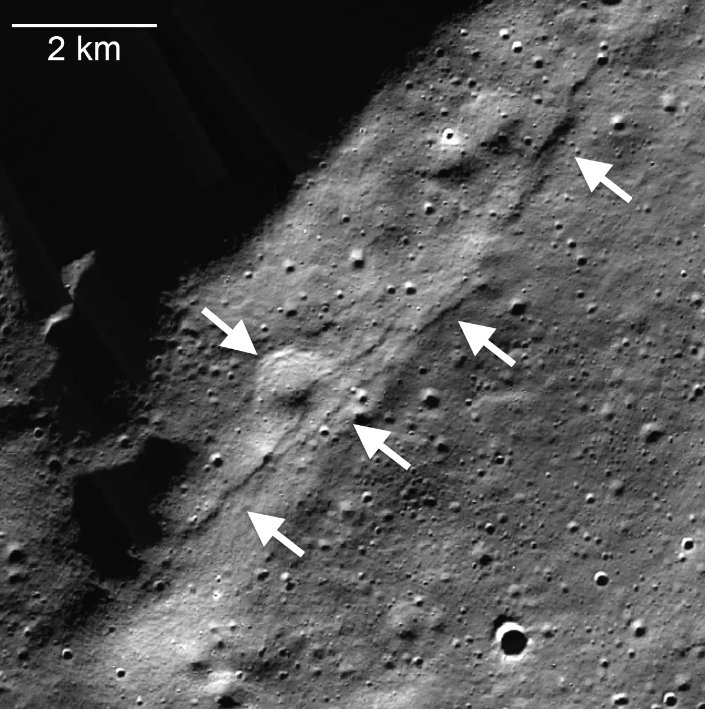
Image credit: NASA/LRO/LROC/ASU/Smithsonian Institution
2024-01-27 solar system
Moon is shrinking and torn by tidal forces from Earth. Evidence for seismic activity has been detected near candidate regions for the Artemis III mission scheduled for a crewed lunar landing. Such quakes can produce ground shaking strong enough for faults to slide or for piling up new thrust faults. The LROC image shows a cluster of lobate scarps (left pointing arrows) near the lunar south pole. A thrust fault scarp cut across an approximately 1-km diameter degraded crater (right pointing arrow). Link to source 🔗
SLIM Imaged by LROC
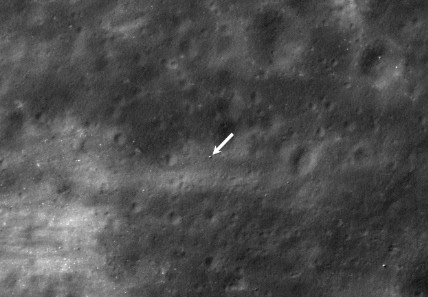
Image credit: NASA/Goddard/Arizona State University
2024-01-27 solar system
NASA’s Lunar Reconnaissance Orbiter captured this image of the JAXA SLIM lander on the Moon’s surface on Jan. 24, 2024. SLIM landed at -13.316° south latitude, +25.2510° east longitude, at an elevation of minus 912 meters. The image is 880 meters wide and lunar north is up. Link to source 🔗
Hubble finds Water in an Exoplanet's Atmosphere
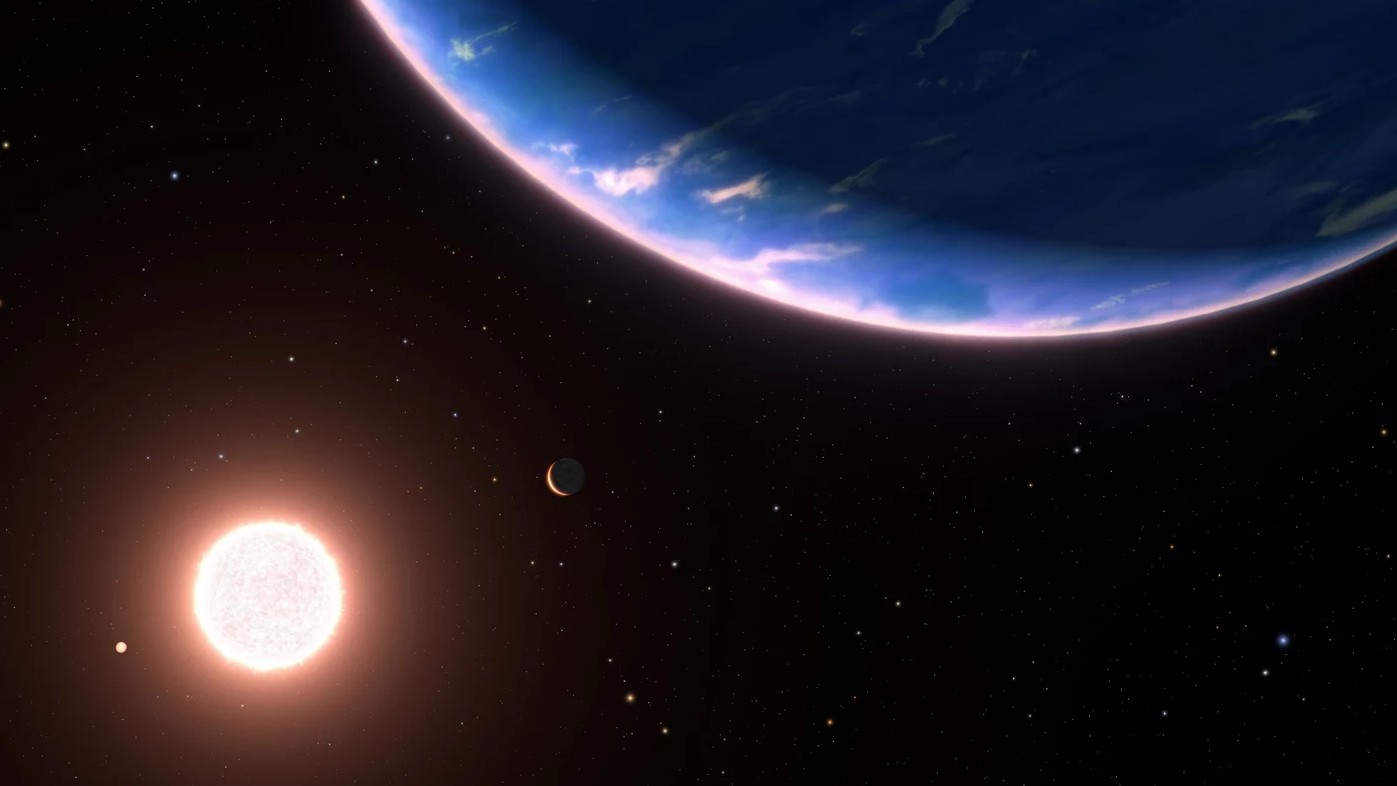
Image credit: NASA, ESA, Leah Hustak (STScI), Ralf Crawford (STScI)
2024-01-26 Exoplanets
Discovered in 2017, the Superterran planet GJ 9827 d is located some 97 light-years away in Pisces and may have a water-rich atmosphere in spite of being hotter than Venus because it orbits extremely close to it host star alongside two further known inner planets. Astronomers will further investigate with the help of the Hubble and James Webb space telescopes. Link to source 🔗
First Light from SLIM
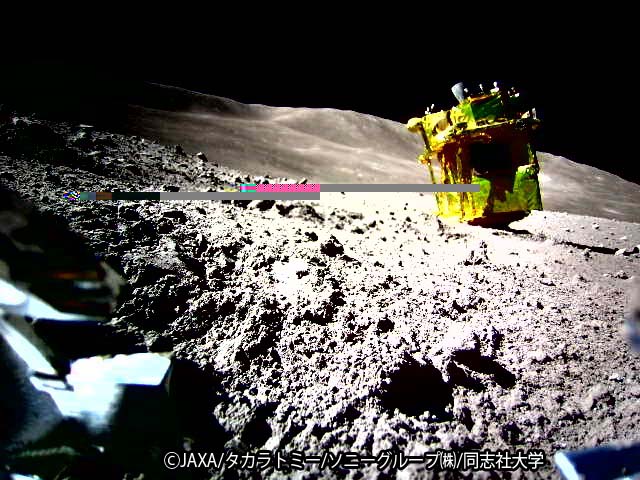
Image credit: JAXA/タカラトミー/ソニーグループ(株)/ 同志社大学)
2024-01-25 solar system
JAXAs lunar lander SLIM has been photographed by its small rover, the Lunar Excursion Vehicle 2 (LEV-2). The soft landing about 55 meters east of target point was completed at 1.4m/sec surpassing specifications. Though the solar panels were supposed to face upwards after landing, on the photo SLIM is shown with its main engine facing upwards, but JAXA hopes it will gather sunlight and restore power until local sunset on Feb 1st. Analysis so far has also revealed that one of the two main engines was lost due to some abnormality at an altitude of 50 meters just before landing. Both exploration rover robots are in good working condition. SLIM landed on the moon at 15:20 on January 19 UTC. Link to source 🔗
Backlog
No, we are not on Facebook but proudly on AstroBin with Mille Gracie to the author Salvatore Iovene:

GoTo Astropical on AstroBin
If anybody is interested in the night life of bats, here is a funny 1-minute MP4 video (24MB).
Legal
In case of abuse or hacking attempts, we reserve the right to report to providers, ISPs and legal authorities. The contents of this site is public, no hidden secrets. The data is backed up in regular intervals.
Cookies
This website does NOT send and use "cookies".
Privacy
Your visit is anonymous. The author processes merely the data that a web browser is typically sending back. The purpose is only for the [Visitors Online] section below.
Free Registration
In order for location dependent data to show correctly you need to register. In the interest of your privacy this website does not automatically retrieve your location via third party services, etc.
Compatibility
Website tested under Windows and Android only. Although largely compatible with smartphones this website is primarily designed for desktops, note books and tablets. This applies in particular to database tables. Double click on page top banners to remove them.
Monitor Calibration
Please adjust your monitor's gamma and contrast, etc. if you cannot distinguish all shades of gray. Click for an enlarged color pattern.

URL Request
If you do not wish to register (no problem) but need to see data for your location only once or so, then you can add the following string to the URL:
?lat=xx.xxx&lon=xxx.xxx&tzn=z.zz
where xx.xxx need to be replaced by your geographic coordinates, z.zz with your time zone. This data will not be stored.
This 'once-view' will work for most pages, such as Planisphere, Deepsky Observer, Ephemerides and Today Monitor.
 US, California, Mountain View
US, California, Mountain View US, California, Mountain View
US, California, Mountain View US, Ohio, Columbus
US, Ohio, Columbus US, California, Mountain View
US, California, Mountain View MX, Mexico City, Mexico City
MX, Mexico City, Mexico CityLast visit from: MX

on page index.php using Macintosh O/S.
Unique visitors today: 90 (since 0:00 UTC) from:


























Newest flag:  Ethiopia -- Welcome!
Ethiopia -- Welcome!
Total page views 6139 since 2024-04-01
from 98 different countries (excluding bots & idiots).

































































































Operating SystemsWindows: 3676Macintosh: 775 Android: 770 Linux: 465 iPhone: 361 iPad: 43 Unknown: 27 Other: 22 |
Most Visitedbinos.php: 1300index.php: 1095 globe_index.php: 833 nikond5300.php: 461 gliese.php: 385 algol.php: 307 kyoei.php: 137 zwoasi120.php: 125 exosingle.php: 117 apscopes.php: 115 |
Site Updates
- 2024-01-09 • Exoplanets with PHL/HWC
- 2023-12-27 • Tomytec Borg telescopes added.
- 2023-12-23 • Takahashi telescopes added.
- 2023-12-21 • Asteroid Dinkinesh & Didymos added.
- 2023-12-18 • Telescopes for AP updated
- 2023-12-02 • Libration calendar 2024 uploaded
- 2023-12-01 • Ephemeris updated for 2024
- 2023-11-16 • Libration data for 2024 updated
- 2023-11-14 • Review BKP150 updated
- 2023-11-13 • Review TS71SDQ updated
- 2023-09-18 • Page Optical Train added
- 2023-10-21 • New PDF brochure added
- 2023-09-18 • Review: Uranus-C added
- 2023-01-21 • EAA for Starters PDF added
- 2022-11-26 • Favorable Librations added
- 2022-11-26 • Libration calendar PDF2023 added
- 2022-11-25 • Online Libration calendar updated
- 2022-11-24 • Ephemerides updated for2023
- 2022-07-19 • Minima of Algol corrected
- 2022-06-28 • Periodic Table of Sensors added
- 2022-06-28 • Fixes in API Reference
- 2022-06-26 • Astrocam updates and corrections
- 2022-04-08 • Maintenance paused due to accident.
- 2022-02-05 • Android Apps added for download.
- 2022-01-16 • Lunar Imaging brochure added.
- 2021-12-30 • Overdue updates and fixes
- 2020-10-20 • Lunar Imaging site added
- 2020-08-25 • Review: ZWO ASI462MC
- 2020-03-05 • The Current Moon
- 2020-02-09 • Review: ZWO ASI290MM

Deepsky Overview
My Humble Gallery
Lunar Imaging
FOV Simulator
Astro Cameras
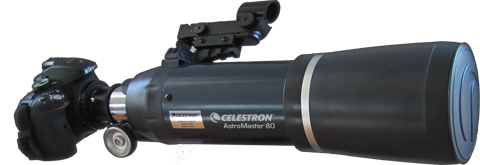
Let's Astrophoto
Telescopes for AP
Total Exoplanet Count: 5616
Kepler/K2: 3322 planetsTESS: 440 planets
Latest exoplanet around:
as of 2024-04-19
| Constellation | Monoceros |
| Distance | 66.32 parsec |
| Magnitude | 6.96 vis. |
| Spectral type | A9/F0 |
| Mass | 1.52 xSun |
| Known planet(s) | 1 |
Acton Sky Portal Observatory 2
Anglo-Australian Telescope 36
Apache Point Observatory 1
Arecibo Observatory 3
Atacama Large Millimeter Array (ALMA) 1
Bohyunsan Optical Astronomical Observatory 26
Calar Alto Observatory 20
Cerro Tololo Inter-American Observatory 5
CHaracterising ExOPlanets Satellite (CHEOPS) 3
CoRoT 35
European Southern Observatory 3
European Space Agency (ESA) Gaia Satellite 3
Fred Lawrence Whipple Observatory 6
Gemini Observatory 9
Haleakala Observatory 2
HATNet 67
HATSouth 73
Haute-Provence Observatory 66
Hubble Space Telescope 6
Infrared Survey Facility 1
James Webb Space Telescope (JWST) 1
K2 548
KELT 10
KELT-North 7
KELT-South 4
Kepler 2774
Kitt Peak National Observatory 1
KMTNet 91
KOINet 1
La Silla Observatory 284
Large Binocular Telescope Observatory 3
Las Campanas Observatory 29
Leoncito Astronomical Complex 1
Lick Observatory 35
Lowell Observatory 3
Mauna Kea Observatory 1
McDonald Observatory 31
MEarth Project 2
MOA 29
Multiple Facilities 18
Multiple Observatories 306
NASA Infrared Telescope Facility (IRTF) 1
Next-Generation Transit Survey (NGTS) 3
OGLE 101
Okayama Astrophysical Observatory 36
Palomar Observatory 2
Paranal Observatory 45
Parkes Observatory 2
Qatar 10
Roque de los Muchachos Observatory 32
South African Radio Astronomy Observatory (SAR 1
SPECULOOS Southern Observatory 1
Spitzer Space Telescope 4
Subaru Telescope 11
SuperWASP 113
SuperWASP-North 5
SuperWASP-South 32
Teide Observatory 1
Thueringer Landessternwarte Tautenburg 8
Transiting Exoplanet Survey Satellite (TESS) 440
TrES 5
United Kingdom Infrared Telescope 2
University of Canterbury Mt John Observatory 1
Very Long Baseline Array 1
W. M. Keck Observatory 188
WASP-South 11
Wide-field Infrared Survey Explorer (WISE) Sat 1
Winer Observatory 1
Xinglong Station 2
XO 6
Yunnan Astronomical Observatory 3
Next NEO Approach
2024 HF1 on 2024-Apr-28 03:41 UTC at 5.0283 LD
Random Objects
Alcyone (25 Eta Tau) in Tau [HIP 17702]
Distance: 368 light-years, Magnitude: 2.85
Alcyone is the brightest star in the Pleiades cluster M45, a binary star orbited by 3 companions. The primary, Alcyone, is 6 times more massive, 8.2 times larger and 2,400 times more luminous than the Sun. Its fast rotation at 215 km/s suggests that the star is a flattened elipsoid.
Star Chart | DSS IR Image 🔗279 G. Sagittarii (GJ 783 A ) in Microscopium
Distance: 20 light-years, Magnitude: 5.3
Gliese 783 (279 G. Sagittarii) is a binary star system which is approaching the sun at a velocity of about 129 km/s. At this rate, it will be 6.7 light years away in 41,100 years, and ten times brighter than now. The A-B pair's masses are 65%/24% solar and measure 66%/28% the radius of the sun. The two stars are separated by a semi-major axis of 56.3 AUs.
Star Chart | DSS IR Image 🔗

M21 (Open Cluster) in Sagittarius
Magnitude: 5.9
At a distance of 4,250 light years from Earth, this group of 57 various magnitude stars all started life together about 4.6 million years ago as part of the Sagittarius OB1 stellar association. It is located in the galactic disk near the Sagittarius star forming region. The cluster lies near to the nebula NGC 6514 (the Trifid nebula).
Star Chart | DSS IR Image 🔗Canis Minor (northern), area rank: 71

Located south of Gemini, its only mark is the 1st-magnitude star Procyon one of the Winter Triangle stars. Since the constellation contains just one more 3rd-magnitude star, Gomeisa, it is impossible to fancy a "little dog". On the flag of Brazil Procyon represents the state of Amazonas.
Star Chart153P/Ikeya-Zhang

Discovered in 2002, 153P/Ikeya-Zhang is a long-periodic comet with the longest known period (366.5 years) for returning comets. On March 18, 2002, the comet last passed perihelion and became the brightest comet since 1997 shining at 3.5 magnitudes. The comets aphelion distance is at over 100 AU away through the Kuiper Belt reaching into the innermost section of the Oort Cloud.
Itokawa (Asteroid)
Semi-major: 1.32276 AU, Size: 0.535 km

Discovered in 1998 and, in 2003, named after a Japanese rocket scientist, the 535 meters small asteroid 25143 Itokawa has been visited by Japan's Hayabusa probe designed to collect soil samples. Hayabusa landed on Nov 20, 2005 for thirty minutes. The sample capsule was returned to Earth on 13 June 2010.
Despina (moon of Neptune)

Despina, discovered in 1989 in Voyager 2 images, is the third closest of Neptune's inner moons with an irregular shape of 180 x148 x128 km. It's orbit is below Neptune's synchronous orbit radius, in that it is slowly spiraling down and will eventually impact or break up in to a ring.
TIC 237913194 b (in Hydrus)
Mass: 1.942 xJup
Radius: 1.117 xJup
SMA: 0.1207 AU
Period: 15.1689 days
Distance: 306.063 parsec
Category: Hot Jovian
ESI: 0.0815862
Android Astronomy Apps
Tweets by astropical4
3D Visualizations
Solar System
Planets
Mercury | Venus | Venus Radar | Earth | Earth Melted | Earth Cretaceous | Mars | Mars Terraformed | Jupiter | Saturn | Uranus | Neptune | Planet Nine (hypothetical)Dwarf Planets
Ceres | Pluto | Haumea | Makemake | Eris | KBOAsteroids
Vesta | Pallas (fictive) | Juno (fictive) |Planetary Moons
Ariel (Uranus) | Callisto (Jupiter) | Charon (Pluto) | Dione (Saturn) | Enceladus (Saturn) | Europa (Jupiter) | Ganymede (Jupiter) | Iapetus (Saturn) | Io (Jupiter) | Mimas (Saturn) | Miranda (Uranus) | Moon (Earth) | Oberon (Uranus) | Rhea (Saturn) | Tethys (Saturn) | Titan (Saturn) | Titania (Uranus) | Triton (Neptune) | Umbriel (Uranus)Comets
67P/Churyumov-Gerasimenko (takes a minute to download)Exoplanets
Exoplanets
Rocky Terran | Ocean Terran | Hot Terran | Warm Terran | Desert Terran | Water Terran | Second Earth | Cloud Planet | Jovian Planet | Saturnian PlanetEarth
Beautiful Earth
Earth in hi-res (can take a minute to download)Earth at Night
Panoramic view (can take a minute to download)









